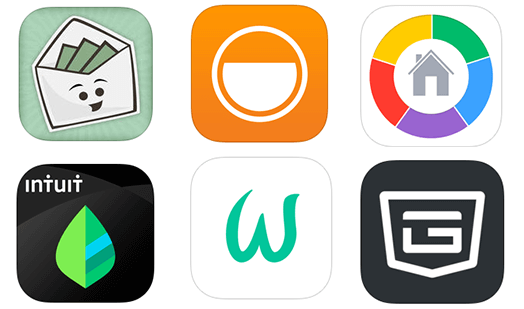The key is to know what your goals and priorities are, and then find an app that best matches your interests. Using a personal finance app is simple once you get set up. And while an app can’t change your personality, it will make it much easier to see where, when, and on what you’re spending; an effective way to better understand your money habits and inspire positive changes.
You’ll be able to access your financial information quickly and easily, almost anywhere. It can help you to avoid unpleasant surprises, anticipate upcoming expenses, analyze spending, and track investment returns. You may even get hooked on it!
There are many different personal finance apps currently available. Here are a few well-regarded personal finance apps for both Android and iPhones (iOS) you should look into.
- Goodbudget
Goodbudget is a straightforward, “back-to-basics” app that is popular with users looking for a simple, effective management tool. It uses a common method called “envelope budgeting” that creates budget categories for different types of expenses, and then allocates amounts for each one. This method encourages spending discipline by enabling users to easily follow how much they’re using from each envelope. It will sync budget info across multiple devices, allowing multiple users to share in the information tracking.
- Home Budget with Sync
Home Budget with Sync is a full-service budgeting and expense management app with a specialized family sharing “sync” option that allows a group of users to manage and coordinate budgets, income, and expenses across multiple devices. The app needs to be installed on every device it operates with, but once in place it offers an unusually high degree of flexibility and control. It’s a good choice for users who are comfortable with mobile financial management, who work as a team, or who like a lot of options.
- Level Money
Level Money is a popular, easy-to-use, personal finance manager that syncs with bank and credit card accounts for both real-time and projected accounting. In addition to tracking spending and billing expenses, it offers an auto-save function and bills itself as a “mobile money meter” that can be an effective tool for helping to pay down debt. It suggests personalized goals for saving and spending, with a planning feature that helps you meet goals in a variety of ways.
- Mint.com
Mint is a widely-recognized, award-winning personal finance app. Its reputation is due partly to its inventive use of simple, easily-understood graphics, and its thorough overview of all your finances (via its “sync” capacity). In addition to automatic, real-time income and expense tracking, it offers numerous features for in-depth management and the ability to add more accounts. It creates an initial budget based which can be customized, and it sends tips, alerts, and reminders to keep you on track.
- PocketGuard
Pocket Guard offers simple, easy charts that help users see where their money is being spent across a range of categories, in addition to basic account tracking and budget management. It uses an encrypted connection to your bank and credit card accounts to provide a full view of your current status and transactions. It also analyzes financial activities to help you plan for and adjust cashflow, and anticipate future needs.
- Wally
Wally is an effective expense tracking app that enables users to easily and quickly view expenses, and track savings and goals. It offers a unique option to track not only where and when you spend money, but also identifies who you spend it with. It notifies you when items are due, as well as when goals are achieved. It also provides an easy way to scan receipts, freeing users from the need to keep hard copies.
These are just a few of the great options available in personal finance apps. There are apps to fit many different types of users and preferences, so take a look and give one a try. Your bottom-line may thank you later!
